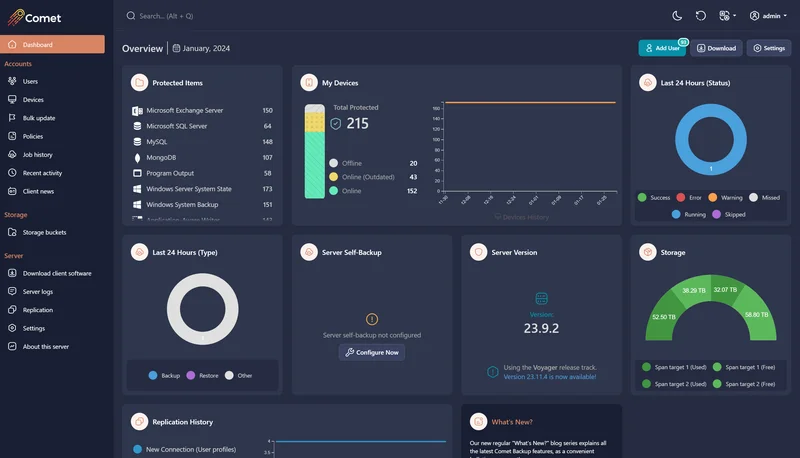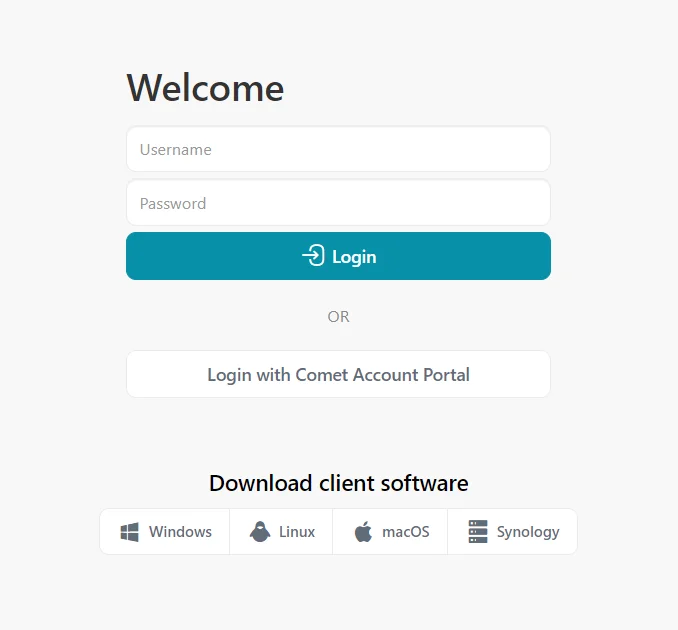
We sat down for a chat with Callum Sinclair, our Product Engineering Manager who has been with the company since January 2023. This piece has been lightly edited for length and clarity.
What is your role at Comet?
I started at Comet as the Development Team Leader, and was promoted into the Product Engineering Manager role earlier this year.
As the Dev Team Leader, I was looking after the entire development department; scoping and managing work for both dev teams, and promoting a culture of quality and growth so that our team is constantly upskilling to better serve our customers’ needs.
Now my role as Product Engineering Manager has grown to also include setting the direction that Comet takes as a product and laying out our product roadmap.
What does your day-to-day look like?
It changes every week depending on what we’ve got going on. That’s what keeps the job exciting.
A lot of it is communicating with internal and external stakeholders about what we're planning to do. One of the most important parts of my role is speaking directly with our customers, distributors and integration partners to hear their needs and figure out how we can address them.
Then I gather all that information into a cohesive vision and work with the development team to scope and action upcoming work.
What attracted you to work at Comet?
I was looking to take the next step in my career and Comet provided me the opportunity to go from a senior software engineer into a leadership role, which was the opportunity I was looking for. It's been awesome.
What is your favorite thing about working at Comet?
The freedom and autonomy to have an impact and make changes that elevate the team and the way we do things. There isn’t a culture of, “you must do it this way”.
The opportunity to grow is incredible. Sometimes that involves mistakes or missteps, but I’ve learned a lot, and continue to improve. I think that is reflected in the product we make. We're always pushing ourselves to be better, which results in a product that’s constantly improving.
How would you describe the team culture?
It’s awesome – everyone supports each other, which is amazing. You can always speak up, ask questions and ask for help. Everyone's here to support each other. One of the strongest things we have at Comet is how well we work with each other.
It’s a very open culture, so you always feel included, you’re never shut out of decisions and you’re always kept in the loop. We encourage everyone to give input, even if it’s not their department or their project. Anyone can voice an opinion or raise an issue. Which makes for a great work environment.
What is the learning and development like at Comet?
You are learning all the time. I don't think there's ever been a day where I haven't been like, "Oh, that's new." Or, "That's something cool."
We're constantly picking up new tech and have the opportunity to work on new things.
That is also reflected in our development work. You're always getting pushed into new areas, you get to work on your code bases, new products, new features. We also push people to do additional training in areas that we think will be of value to them in the future. So there's plenty of chances to grow and to learn.
What keeps you passionate about moving forward in the industry?
I’m passionate about building a high quality backup product that fits the needs of organizations across many different industries. I’m excited that we have the opportunity to be innovative and refine our ideas.
What advice would you give to someone who wants to get into the tech industry?
There’s a lot of ways to get into the industry, and I think it really just starts with being passionate in anything related to tech.
You can go the traditional ways through university or higher education taking courses like computer science or software engineering. That gives you great exposure to the different fields and domains within the tech industry.
Another way is just getting involved and writing your own code. I think it comes down to what you’re passionate about and following what interests you.
Where did your passion for tech start?
My earliest memory of tech is probably playing Age of Empires II on an old school Windows XP, that got me interest in computers in general.
From there I started doing programming courses in high school and in college, which led to being interested in studying computer science. The more I learned, the more interested I got because there is so much to learn and tech is evolving so quickly. There’s so many areas you can get into.
If you could have any tech superpower, what would it be?
The first that came to mind would be the ability to instantly write code in different languages. I know about four coding languages at this point and I'd love to learn more, but don't have the time. Being able to natively pick it up and jump in between code bases would be awesome.
Also, being able to spot code issues would be another one. But then again some of the fun of coding is spending the hours to find the bug, finally understanding it, and then fixing it. So having that superpower might be cheating the process a little bit.
What do you like about living in Christchurch?
I like biking as my mode of transport, so it’s fantastic that it’s flat in Christchurch. It’s also really convenient to get to most outdoor activities. Christchurch is close to the mountains and also has nice beaches nearby. Being on the South Island, we have easy access to do weekend trips to amazing destinations like Wanaka and Queenstown.
What are some of your interests and hobbies?
I used to swim competitively, and I still spend some time training in the pool. I’m also a big fan of F1 racing now. Another hobby is trying out new foods, cooking different cuisines, and trying the adventurous options at restaurants.
We know everyone at Comet loves food. What are your top three restaurants in Christchurch?
At the moment, I'm a big fan of the barbecue restaurants. There’s Beers down the road from the office, and an all you can eat Brazilian BBQ place in Papanui. And I like El Quincho, the Argentinian BBQ place at Riverside Market.



















